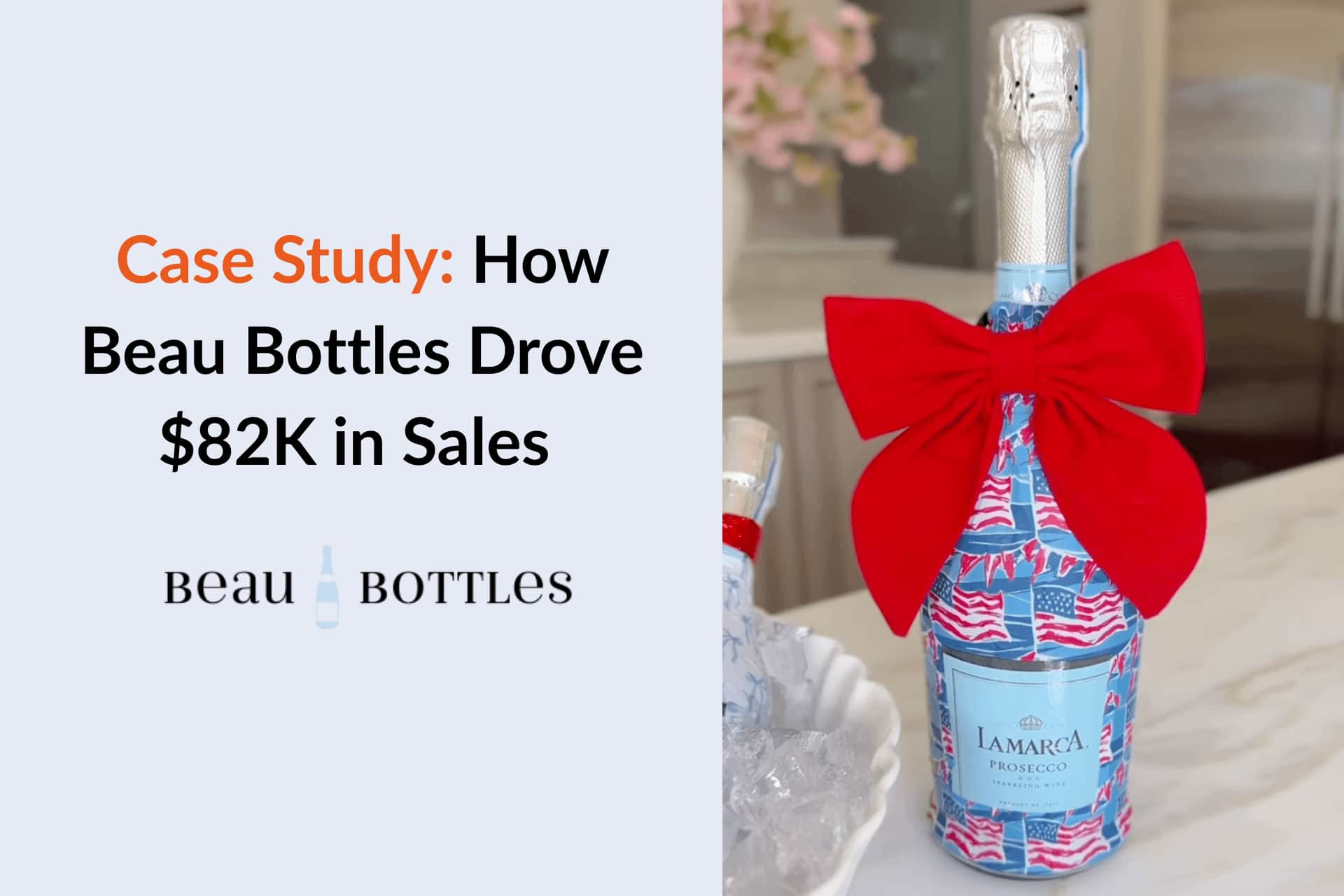





When it comes to growing a D2C brand with influencer marketing, many marketers turn to tools like Influencers Club. While the platform helps businesses access a wide database of creators, users often point out limitations that make them seek alternatives. Common frustrations include the lack of advanced campaign management tools, limited integrations with platforms like TikTok and YouTube, and inconsistent data accuracy when it comes to influencer engagement and audience demographics.
According to G2’s 2025 influencer marketing software report, brands are increasingly prioritizing platforms that combine influencer discovery with end-to-end campaign execution, especially those offering verified performance data and cross-platform coverage across Instagram, TikTok, YouTube, and Facebook.
In this article, we’ll compare the top 10 Influencers Club alternatives, highlighting their features, pricing, and user reviews so you can choose the right tool for your marketing strategy:
Let’s discover four reasons why some users might be seeking Influencers Club alternatives:
There are only a handful of public reviews across review sites , and you won’t find a robust G2 product page footprint like you do for established influencer platforms, which makes independent validation hard for potential buyers.
Reddit threads and community discussions report users finding the product “a bit outdated” for some discovery workflows and recommend alternatives for more reliable bulk outreach tools.
For small brands, solo marketers, or early-stage businesses, that cost might be prohibitively expensive, especially if not all features are needed or if outcomes are uncertain.
The platform’s core offering is discovery, enrichment, outreach, and data via API. Less emphasis (at least from what's publicly visible) on campaign execution features like content review workflows, influencer contracts, payment/disbursements, campaign scheduling, deep analytics after campaigns, or creative collaboration tools.
Our comparison focuses on several key aspects:
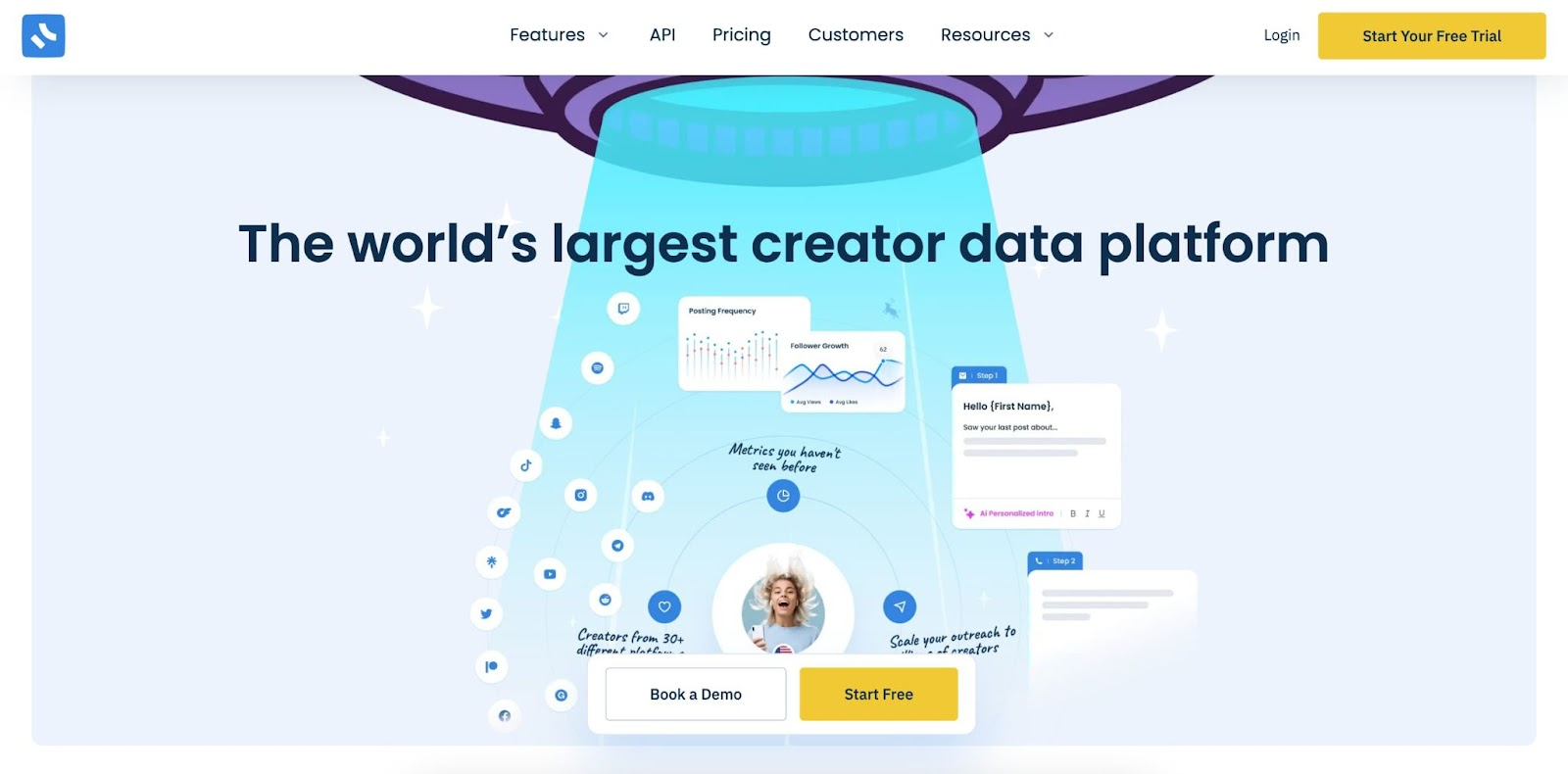
Platform Coverage: Instagram, TikTok, YouTube, Twitter, Twitch, plus many others.
Best For: Brands, agencies or eCommerce businesses that run ongoing influencer / creator outreach and wish to scale discovery, enrichment, and outreach with data-heavy workflows. It works particularly well if you want many creator options, strong filtering, verified contact data, and possibly automated / managed outreach.
Pricing:
Reviews: 0.0 / 5.0 (G2)
Ease of Use (UX/UI): The discovery tools are powerful, with 40+ data points, cross-platform views, and AI search making creator targeting easier. However, some users report payment and deliverable issues, suggesting workflow or expectation challenges.
Customer Support: When things go well, onboarding is smooth, communication is professional, and the team is helpful. However, Trustpilot reviews note payment and invoice issues, suggesting support and delivery can be inconsistent.

Platform Coverage: Instagram, TikTok, YouTube, Facebook, Pinterest, Snapchat, X, Twitch
Best For: Influencer Hero is best for D2C and eCommerce brands looking to scale influencer marketing campaigns with automation, deep analytics, and seamless eCommerce integrations. It’s especially valuable for teams managing large-scale seeding and affiliate programs while keeping ROI at the center.
Pricing: (Plans are monthly and scalable.)
Reviews: 5.0 / 5.0 (Capterra)
Ease of Use (UX/UI): Influencer Hero is known for its clean, intuitive design that eliminates steep learning curves. The streamlined dashboard, drag-and-drop campaign setup, and automated workflows help teams move quickly. Users also benefit from customizable email templates and a Chrome extension that saves hours every week by pulling real-time influencer insights directly into campaigns.
Customer Support: Customer support is one of Influencer Hero’s most praised features. The platform offers 24/7 live chat with real humans, responsive email support, and an extensive Help Center filled with tutorials and video guides. Every plan includes a dedicated account manager from day one, with strategy consultations available for guided growth. Pro plan users also gain access to a private Slack channel for faster, continuous communication.
While both Influencers Club and Influencer Hero offer influencer discovery and outreach, the differences become clear in pricing, scalability, and depth of features. Influencers Club often charges additional fees for advanced features, while Influencer Hero’s plans are designed to scale as campaigns grow, starting at $649/month with robust CRM, outreach, and reporting tools included from day one.
Influencer Hero goes beyond simple discovery with AI-driven outreach, integrated eCommerce gifting, and advanced ROI tracking, which makes it ideal for brands running performance-driven campaigns. On top of that, Influencer Hero provides dedicated account managers and 24/7 support, ensuring brands don’t just have software but also a growth partner.
For companies managing influencer marketing at scale, Influencer Hero delivers a more complete, automation-first solution, whereas Influencers Club is better suited for basic discovery needs.
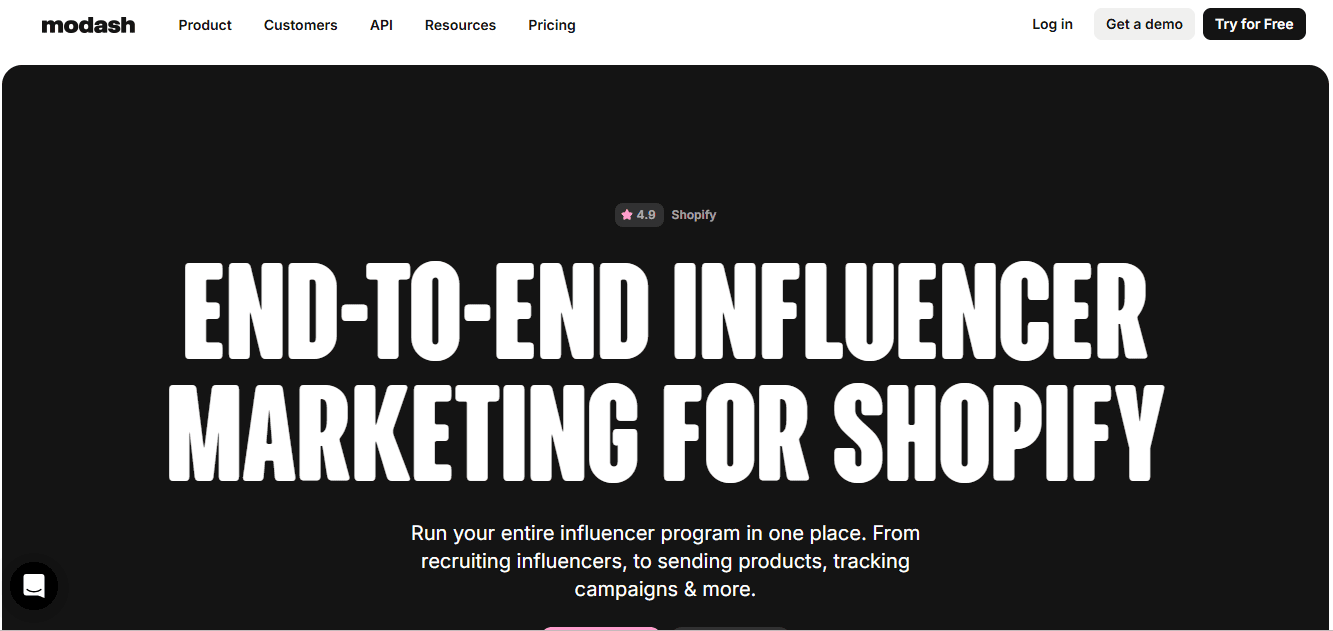
Platform Coverage: Instagram, TikTok, YouTube, and profile recognition for X, Snapchat, and other platforms.
Best For: Brands and in-house marketing teams who want an end-to-end influencer marketing platform with strong discovery, analytics, and campaign tracking. It works especially well for brands already using Shopify or other e-commerce platforms and seeking to scale their influencer programs with data-driven decisions
Pricing: Modash offers free trials to both their Essentials and Performance plan.
Reviews: 4.9 / 5.0(Capterra.com)
Ease of Use (UX/UI): Users frequently say Modash’s interface is very intuitive, clean, and efficient. The discovery tools and the filtering/search UI are often highlighted as being practical and not overly complex.
Customer Support: Support is viewed as responsive and helpful; users often mention that the Modash team listens to feedback, pushes updates, and helps in onboarding or resolving issues.
Compared to Influencers Club, Modash offers more detailed audience analytics, influencer discovery, automatically collected content, and more compliance-oriented features. For brands wanting more than just discovery and basic outreach, Modash tends to provide deeper tools.
Modash’s pricing starts lower when billed annually but monthly plans and higher usage/volume can drive up cost. Influencers Club may have simpler plans for smaller scale. So, if a brand is just starting out and wants minimal cost and simpler features, Influencers Club might suffice. But for scale, performance tracking, and eCommerce integrations, Modash has a stronger case.
Brands that value fast onboarding, good UI, and responsive support will likely prefer Modash. Many users report that Modash’s support, customer success, and UX are solid differentiators.

Platform Coverage: Instagram, TikTok, YouTube, X , Twitch, Pinterest, WordPress blogs.
Best For: eCommerce and D2C brands (especially Shopify and Amazon sellers) that need an end-to-end influencer + affiliate program: discovery, outreach (AI-assisted), campaign management, affiliate tracking and payouts — all in one place.
Pricing: Upfluence offers annual contracts with the following pricing.
Reviews: 4.6 / 5.0 (G2)
Ease of Use (UX/UI): Users report a feature-rich interface that’s powerful for discovery and campaign management, but there’s a learning curve, new users sometimes need onboarding help to unlock the platform’s full value.
Customer Support: Many reviews praise responsive onboarding and account managers (hands-on support for integration with Shopify/Outlook/Gmail). However, a minority of users report frustrating support experiences around billing/contract issues, results can depend on your account manager and contract terms.
Influencers Club is more affordable and focuses on influencer discovery and outreach, with flexible billing options and lower entry costs. It’s well-suited for smaller brands testing influencer campaigns or those mainly needing access to creator data.
Upfluence, on the other hand, is a more comprehensive solution with higher pricing, annual contracts, and deeper integrations with Shopify, Amazon, and affiliate tracking. It’s designed for eCommerce and D2C brands that want an end-to-end platform handling discovery, outreach, payments, and ROI attribution.
In short: choose Influencers Club for budget-friendly discovery and outreach, and Upfluence if you need full-scale campaign management and advanced eCommerce integrations.
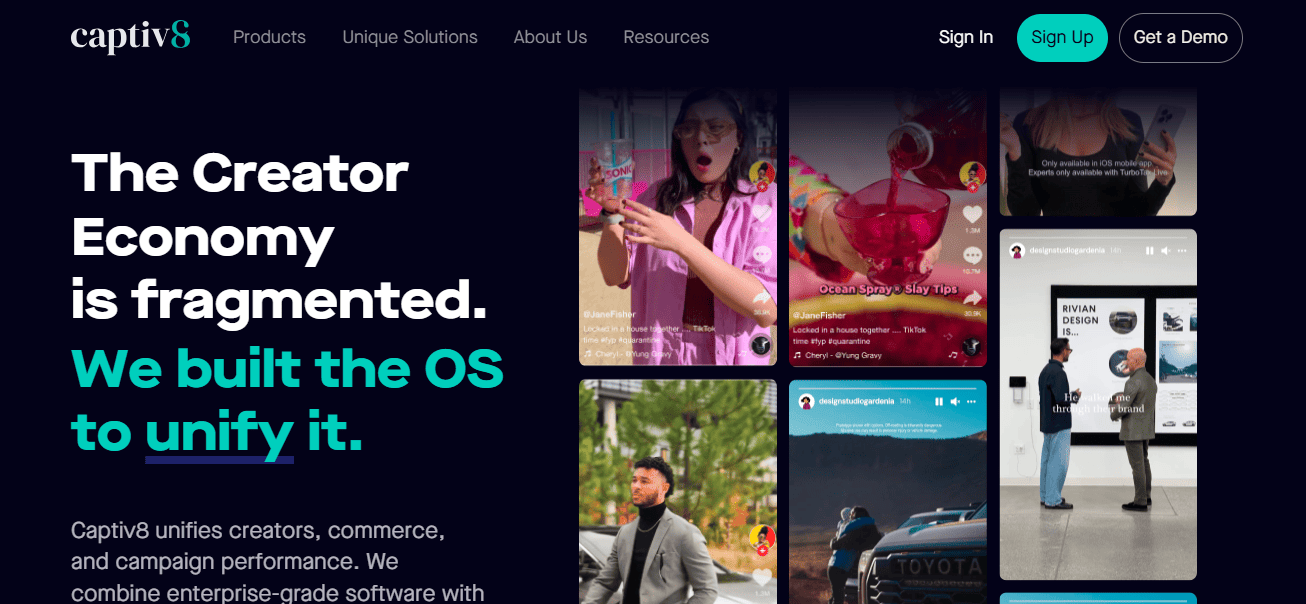
Platform Coverage: Captiv8 supports influencer campaigns across Instagram, YouTube, TikTok, Facebook, Twitter, and Pinterest.
Best For: Large brands and enterprises looking for a comprehensive influencer marketing platform with advanced discovery, detailed performance tracking, and strong competitive intelligence features. It’s particularly suited for companies running multiple campaigns at scale and willing to invest in enterprise-level solutions.
Pricing:
No monthly or customizable plans are available; pricing is rigid and enterprise-focused
Reviews: 4.6 / 5.0 (G2)
Ease of Use (UX/UI): Users highlight Captiv8’s robust features but note that the interface can feel complex at first, requiring time to fully learn. Once onboarded, many appreciate the ability to customize reports and collaborate easily within campaigns.
Customer Support: Some enterprise clients value the managed services team, while others report slow responses and unresolved issues. Creators and brands alike have noted frustrations with payment processes and lack of timely support.
Discover our top 10 Captiv8 alternatives to power your influencer marketing with better pricing & reviews.
Influencers Club is designed to be more flexible and cost-efficient, offering lower entry pricing and pay-as-you-go options for influencer discovery and outreach. It’s a good fit for smaller or mid-sized brands that mainly need creator data and outreach tools without committing to large enterprise contracts.
Captiv8, in contrast, positions itself as a premium, enterprise-level platform. With its advanced reporting, competitive intelligence, and storefront/affiliate commerce add-ons, it caters to global brands running multi-campaign strategies. However, its high pricing (annual-only commitments starting at $25K plus costly add-ons) makes it inaccessible for smaller teams.
In short: choose Influencers Club for affordability and flexibility in influencer discovery and outreach, and Captiv8 if you’re an enterprise brand that needs advanced intelligence, campaign collaboration, and are prepared for a significant investment.
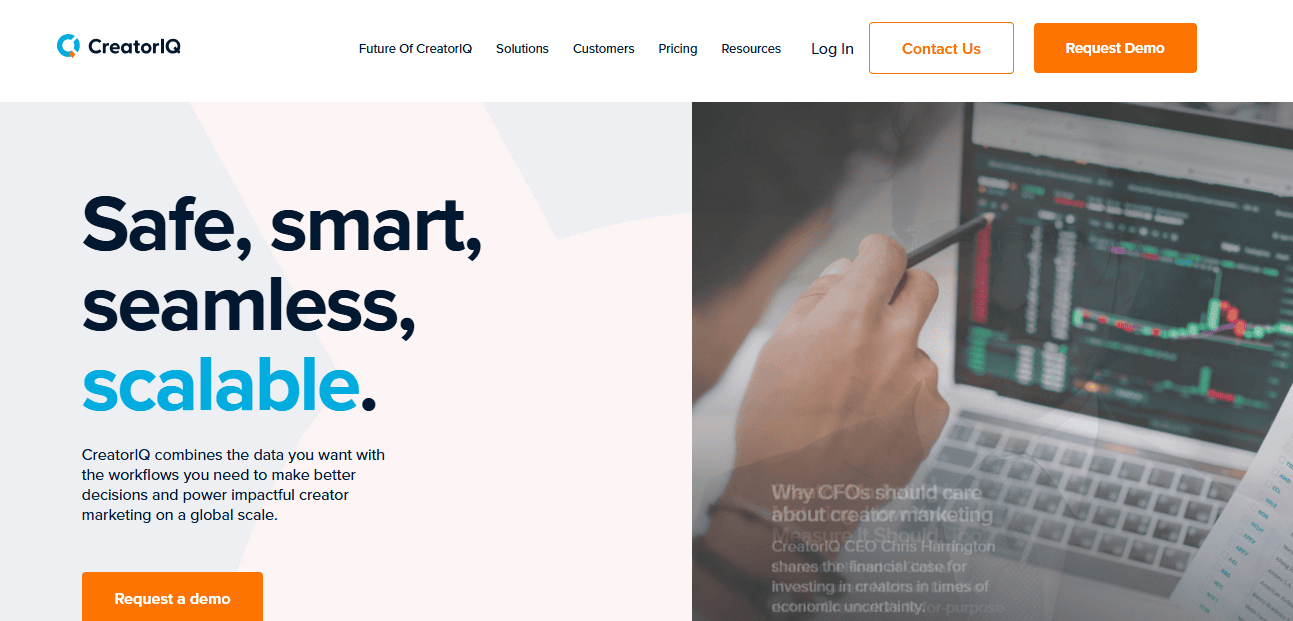
Platform Coverage: Instagram, TikTok, YouTube, Facebook, Pinterest, Twitch, X.
Best For: Best for global brands, agencies, and enterprises seeking a highly scalable influencer marketing solution with advanced data-driven insights, customizable workflows, and integrations across multiple tech stacks. It’s particularly strong for organizations managing complex, multi-market campaigns at scale.
Reviews: 4.6 / 5.0 (G2)
Ease of Use (UX/UI): Users describe the platform as robust and comprehensive, but with a steeper learning curve due to its wide feature set. Once set up, the dashboard and reporting tools are considered intuitive and highly customizable for different campaign needs.
Customer Support: Most reviews highlight responsive account managers and strong onboarding support, especially for enterprise clients. However, some users mention delays in resolving technical issues due to the complexity of the platform.
Influencers Club is built for affordability and flexibility, offering accessible pricing models and simpler tools for influencer discovery and outreach. It’s well-suited for smaller and mid-sized brands that want data-driven creator search without committing to enterprise-level contracts.
CreatorIQ, on the other hand, is positioned as a premium enterprise platform. With its advanced fraud detection, deep integrations, and global scalability, it’s ideal for multinational corporations and agencies running large, complex influencer programs. However, its pricing structure is significantly higher, reflecting its enterprise positioning.
In short: choose Influencers Club if you want cost-effective discovery and outreach, and CreatorIQ if you’re an enterprise needing full-scale, globally compliant campaign management with advanced integrations and reporting.
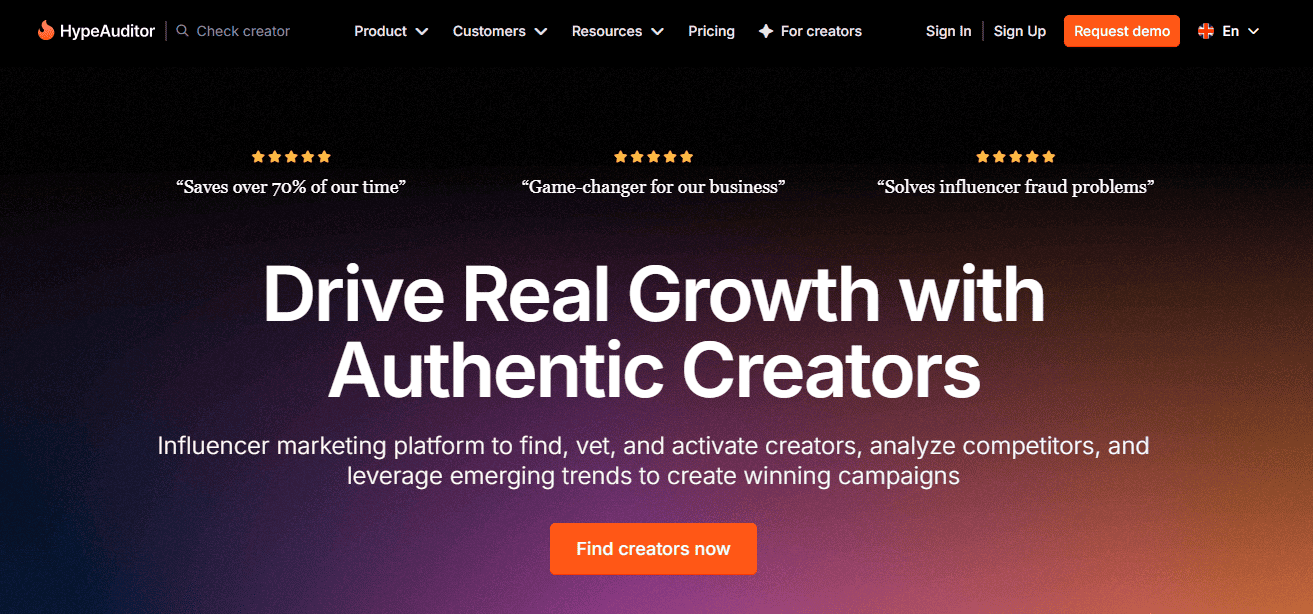
Platform Coverage: Instagram, TikTok, YouTube, Twitch, X (Twitter), Snapchat
Best For: Brands, agencies, and eCommerce businesses that prioritize data accuracy, influencer fraud detection, and ROI tracking. It’s particularly suited for teams looking to run influencer campaigns with deep audience insights, authenticity scores, and flexible campaign management tools
Pricing: Custom plans based on usage. Flexible contract terms depending on platform access, campaign volume, and number of reports.
Reviews: 4.5 / 5.0 (G2)
Ease of Use (UX/UI): Users note that the platform is data-rich and feature-packed, which can feel overwhelming for beginners. However, once trained, the dashboard is intuitive, with clear filters and customizable reporting that make campaign tracking efficient.
Customer Support: Most users highlight responsive onboarding and helpful account managers, especially during the setup phase. Some reviews point out that troubleshooting complex features or billing questions can take longer to resolve.
Explore the top 10 HypeAuditor alternatives offering effective influencer marketing tools, side by side.
Influencers Club is a more affordable and flexible option focused on influencer discovery and outreach. It provides accessible pricing models that are easier for smaller or mid-sized brands, and it emphasizes straightforward creator data rather than full end-to-end campaign management.
HypeAuditor, in contrast, positions itself as a premium analytics-driven platform. With its strong fraud detection, advanced AI-powered search, and eCommerce ROI tracking, it’s better suited for brands that want to prioritize authenticity and data-backed decision-making. However, its pricing starts at $10K/year, which can be a barrier for smaller teams.
In short: choose Influencers Club for budget-friendly discovery and outreach, and HypeAuditor if you need advanced analytics, fraud detection, and ROI tracking, and have the budget to support it.
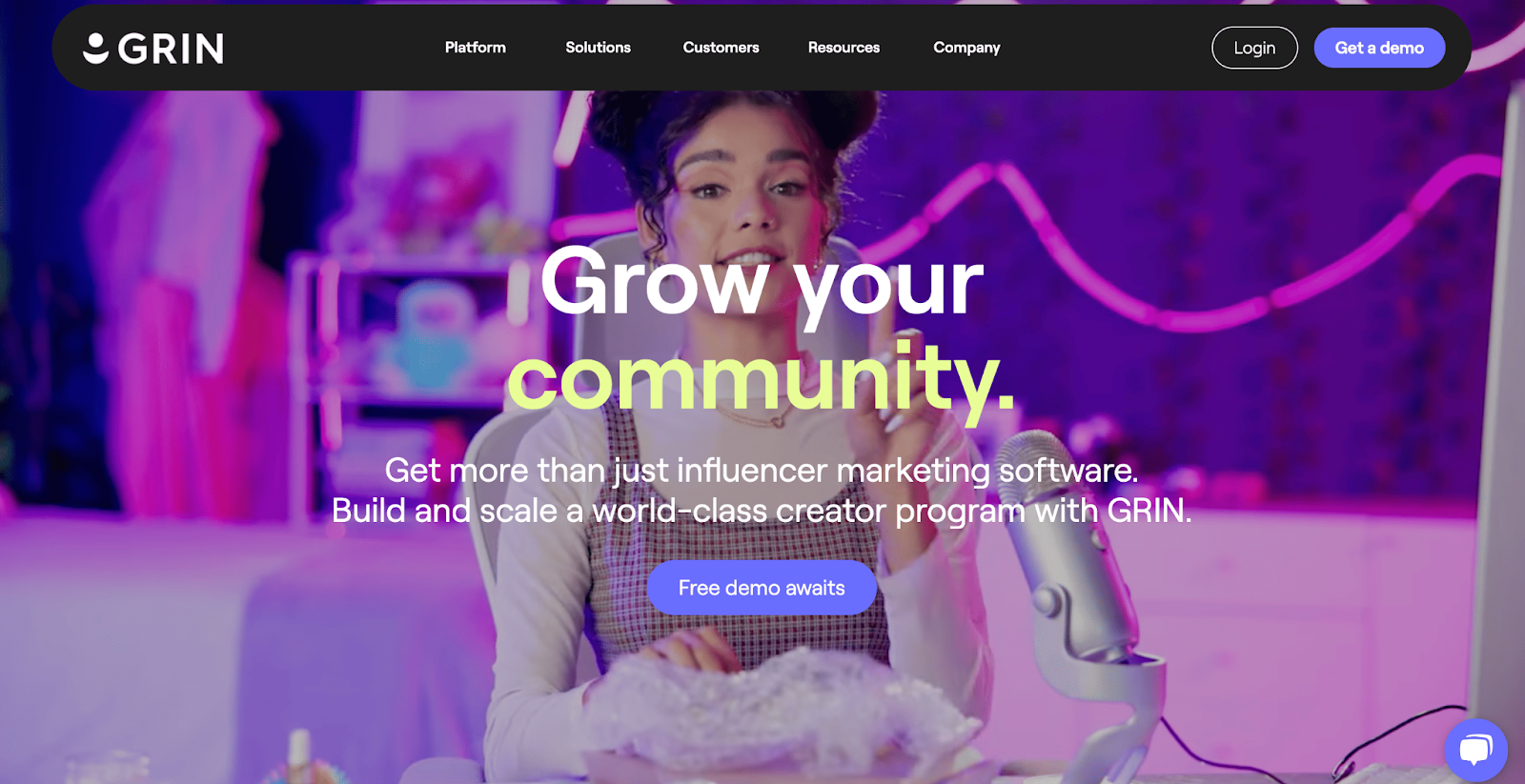
Platform Coverage: Instagram, TikTok, YouTube, X, Twitch, Snapchat
Best For: Best for eCommerce and DTC brands that want to manage influencer programs end-to-end, from product seeding and gifting to affiliate tracking, payments, and UGC management. It’s particularly strong for Shopify, WooCommerce, and Magento users looking to connect influencer marketing directly to sales and ROI.
Pricing: Plans start at $25,000 per year, with monthly payments available and a required 12-month commitment; typical monthly costs range from $2,500 to over $10,000 depending on usage, though pricing transparency may vary based on selected features.
Reviews: 4.5 / 5.0 (G2)
Ease of Use (UX/UI): Users find the platform comprehensive, but its depth can feel overwhelming for beginners. Once set up, the dashboard centralizes influencer discovery, outreach, gifting, and reporting in one place, streamlining workflows.
Customer Support: Customer support receives mixed reviews: many users praise GRIN’s onboarding and dedicated strategists, but others note delays in ticket resolution and frustration with billing or feature issues.
Influencers Club is a cost-effective solution that focuses on influencer discovery and outreach. Its flexible pricing makes it accessible to smaller or mid-sized brands that want to experiment with influencer campaigns without committing to large annual contracts.
GRIN, by contrast, is built specifically for eCommerce brands that need an all-in-one solution. With deep Shopify and WooCommerce integrations, automated gifting, and built-in ROI tracking, it ties influencer efforts directly to sales. However, GRIN’s fixed pricing (starting around $25K/year) and enterprise-level positioning make it better suited for larger DTC brands with established influencer programs.
Choose Influencers Club for affordable, flexible discovery and outreach, and GRIN if you’re an eCommerce brand looking for a full-stack influencer marketing solution that directly connects campaigns to conversions.
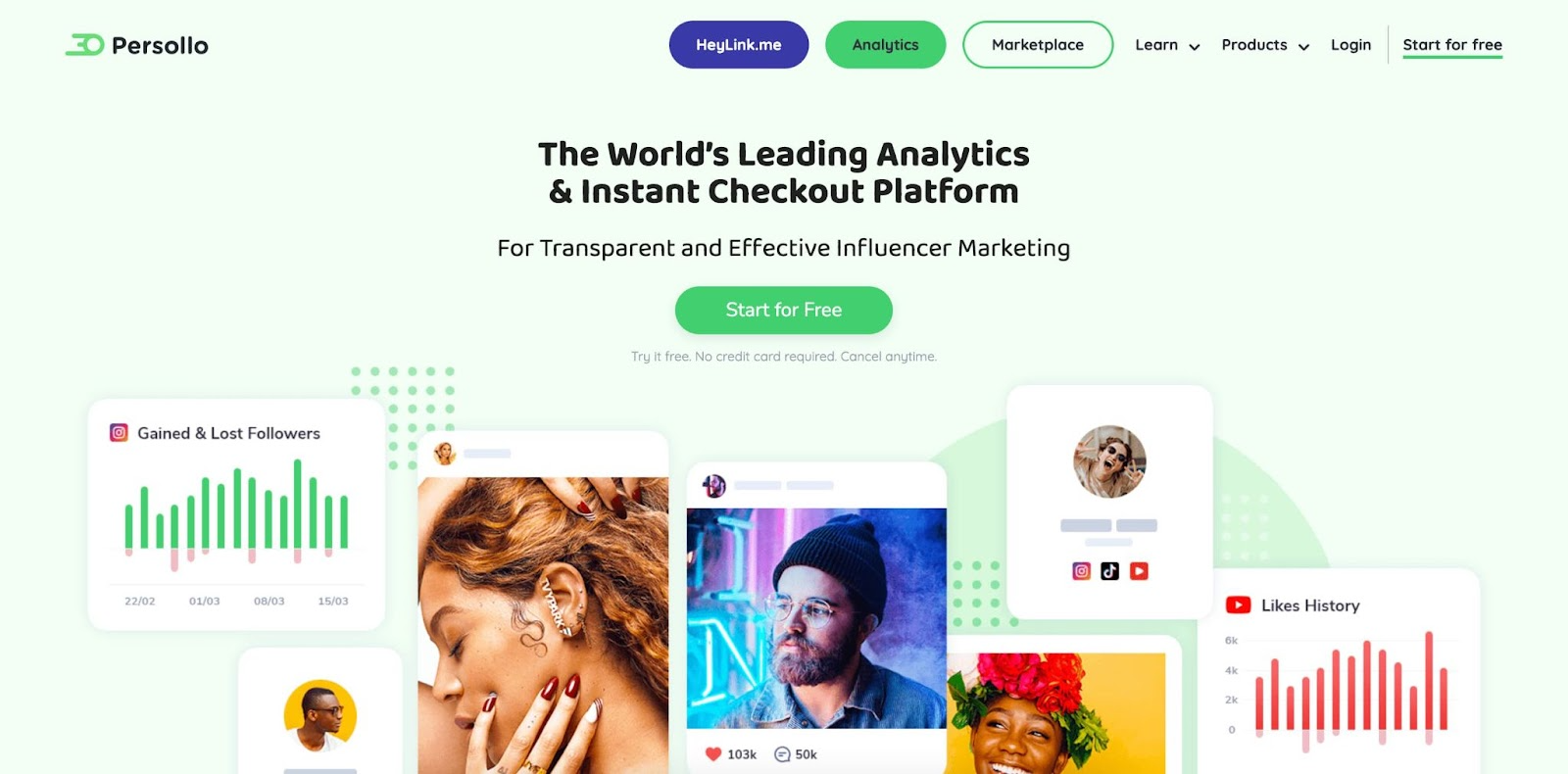
Platform Coverage: Instagram, TikTok, YouTube, Facebook, X.
Best For: eCommerce brands, creators, and small boutique businesses that want to turn social engagement into immediate purchases via one-click checkout. It works especially well for impulse-driven categories like fashion, beauty, and lifestyle where fast, frictionless conversions are critical.
Uncover our list of the top 10 Persollo alternatives rated for pricing and performance in influencer campaigns.
Pricing:
Reviews: 4.7 / 5.0 (G2)
Ease of Use (UX/UI): Users emphasize Persollo’s straightforwardness and speed, noting how quickly instant checkout links can be created without a heavy eCommerce setup. The interface is built for low friction and quick monetization, making it accessible to small businesses without technical resources.
Customer Support: Public information about Persollo’s support is sparse, but enterprise clients receive dedicated support and tailored services. For lower tiers, user feedback indicates that improved onboarding and more accessible live support would enhance the experience.
Influencers Club is focused on influencer discovery and outreach, offering flexible pricing models that make it accessible to smaller or mid-sized brands. It helps businesses find relevant creators and build direct connections without requiring enterprise-level investments or complex workflows.
Persollo, on the other hand, specializes in social commerce. Its standout feature is one-click checkout, enabling instant purchases from influencer posts or branded content. This makes it particularly effective for fashion, beauty, and lifestyle brands where impulse buying and seamless checkout are critical. However, while Persollo offers a free tier and pay-as-you-go options, its features are geared more toward monetization than influencer relationship management.
Choose Influencers Club if your main goal is cost-effective influencer discovery and outreach, and Persollo if you want to focus on converting influencer engagement directly into sales with instant checkout and shoppable content.
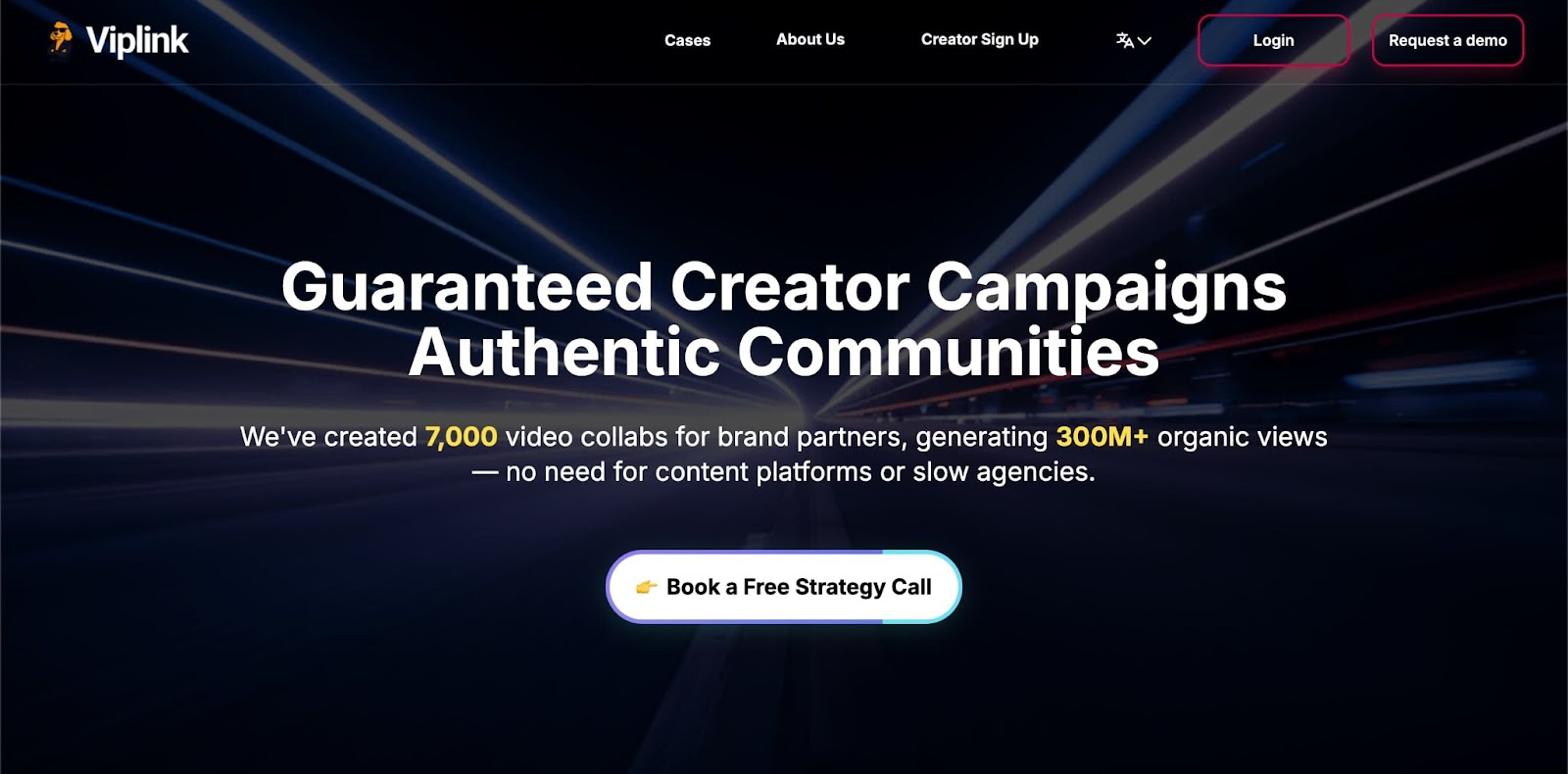
Platform Coverage: YouTube, Instagram, TikTok, Facebook.
Best For: Serves eCommerce and D2C brands that want to use AI-driven influencer discovery, campaign management, and content generation to scale influencer and affiliate marketing. It’s particularly useful for brands seeking automation and data-driven influencer selection.
Pricing: No upfront fees; payment is only due once you approve creators and content. Brands must pay an additional fee, an amount not publicly disclosed, based on payments made to each creator.
Reviews: 4.4 / 5.0 (G2)
Ease of Use (UX/UI): Users report a clean, modern, and intuitive interface, especially when building campaigns or searching for influencers. AI automations reduce manual work, making it simpler to shortlist creators, create outreach templates, and monitor results. Some users note that the platform’s depth means it can take time to fully explore all features.
Customer Support: Viplink AI is recognized for a responsive support team offering help via email, chat, and scheduled consultations. Clients praise proactive onboarding and thorough documentation, though response times can slow during peak campaign periods when support demand increases.
Influencers Club emphasizes affordability and simplicity, giving brands straightforward access to influencer data and outreach capabilities. It’s designed for businesses that want to test or scale campaigns without locking into high-cost contracts, making it attractive to smaller marketing teams.
Viplink AI, in contrast, provides a more advanced and AI-driven approach. Its platform supports automated influencer discovery, campaign CRM, contract workflows, and video content performance tracking, making it especially strong for eCommerce and D2C brands running affiliate or TikTok-first campaigns. The downside is that its pricing is not publicly transparent, and some features come with a learning curve.
Choose Influencers Club if you want a budget-friendly and straightforward discovery tool, and Viplink AI if you need AI-powered automation, advanced campaign tools, and deeper insights into short-form video and affiliate performance.

Platform Coverage: Instagram, TikTok, YouTube, Twitch, Facebook, X (Twitter), Pinterest, and blogs; 20M+ creator profiles across 10+ networks.
Best For: Mid-to-large brands and agencies that want a full-lifecycle influencer marketing platform, particularly in industries like gaming, consumer electronics, fashion, and entertainment. It’s designed for enterprise-level teams that need robust discovery, campaign management, and ROI tracking with strong integration capabilities.
Pricing: Undisclosed.
Reviews: 4.2 / 5.0 (G2)
Ease of Use (UX/UI): Users say the platform is feature-rich and powerful but can feel complex at first, requiring onboarding to fully understand all the tools. Once learned, the dashboard is intuitive and makes managing multiple creators and campaigns easier.
Customer Support: Enterprise clients highlight responsive account managers and dedicated support teams, especially for onboarding and integrations. However, some users mention that support can be slower when handling smaller accounts or technical issues.
Influencers Club is built for affordability and simplicity, making it a strong option for smaller brands or teams that mainly need influencer discovery and outreach tools. Its flexible pricing and straightforward functionality make it easier to adopt for those new to influencer marketing.
Sideqik, on the other hand, is positioned as an enterprise-grade platform. With advanced discovery, AI-powered analytics, engagement tools, and integrations with Shopify, Google Analytics, and Impact, it’s designed for brands managing multiple campaigns and seeking measurable ROI. However, its pricing (starting at ~$25K/year) makes it more suited for larger organizations.
Choose Influencers Club if you need budget-friendly discovery and outreach, and Sideqik if you’re a mid-to-large brand looking for an enterprise-ready solution with deep integrations and end-to-end campaign management.
When evaluating alternatives to Influencers Club, it’s clear that brands and agencies have a wide range of options depending on their priorities. Platforms like Modash, Upfluence, Captiv8, and CreatorIQ excel at providing deeper analytics, eCommerce integrations, or enterprise-level scalability, while others such as Persollo and Viplink AI bring innovation through instant checkout and AI-powered campaign automation.
Among these alternatives, Influencer Hero stands out as one of the best all-in-one solutions. It combines robust influencer discovery with AI-powered outreach, advanced reporting, seamless eCommerce integrations, and dedicated account management, making it more than just a software tool, it’s a true growth partner. With flexible pricing, premium support, and strong reviews, Influencer Hero is particularly well-suited for D2C and eCommerce brands that want to scale influencer marketing effectively while keeping ROI at the core of their strategy.
Book a demo with Influencer Hero and see how it can transform your influencer marketing campaigns today!

Because it mainly focuses on discovery and outreach, with limited campaign management, few integrations, and higher costs for small teams. Influencer Hero solves this with a complete end-to-end platform.
Influencer Hero is the top choice, offering discovery, CRM, automated outreach, eCommerce gifting, affiliate payments, and ROI tracking, far beyond what Influencers Club provides.
Smaller brands may prefer Modash or Persollo for lower entry costs, but Influencer Hero is a strong scalable choice with flexible pricing starting at $649/month.
HypeAuditor and Modash excel in data accuracy, while Influencer Hero also provides advanced filters, real-time insights, and fake follower detection.
Yes. Influencer Hero, Upfluence, and GRIN integrate with Shopify and WooCommerce to automate gifting, track affiliate sales, and manage payments, features Influencers Club lacks.



Schedule a Demo with one of our media experts below.